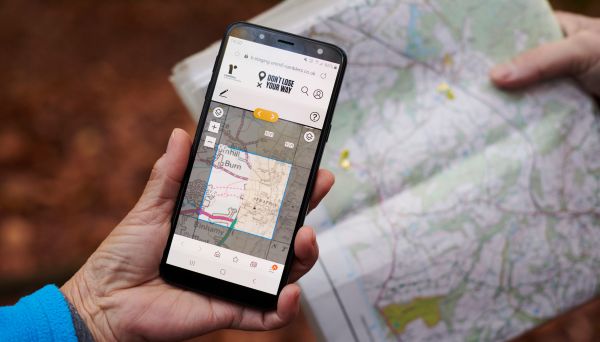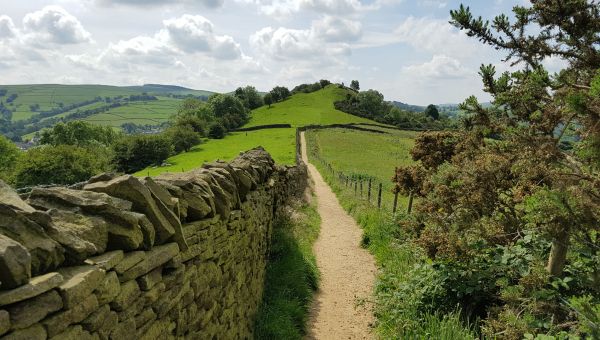Claiming unrecorded public rights of way
How to get unrecorded paths added to the Definitive Map

Advice relevant to England and Wales only. Find information about access rights in Scotland.
Public rights of way such as footpaths, bridleways and byways are highways under the law. They are recorded on legal documents held by the local authority called the Definitive Map and Statement.
If a path isn’t recorded on the Definitive Map and Statement, it doesn’t mean that the path isn’t legally a public right of way. New paths may not yet have been recorded. Plus, the Ramblers Don’t Lose Your Way campaign identified over 49,000 miles of paths in England and Wales that aren’t recorded on the Definitive Maps.
Where public paths aren’t recorded, the local authority is unlikely to resolve problems like locked gates or intimidating signs. Unrecorded paths are also vulnerable to development.
Therefore, it is vitally important that unrecorded paths are claimed by the public and added to the Definitive Map so that they get the protection to which they are legally entitled to.
How to claim a public right of way
Before you try to claim a public right of way, be sure you know what status (if any) it holds now.
-
Most local authorities have interactive maps of public rights of way on their websites. Search online for the name of the local authority and “Definitive map” or “rights of way map”. Online maps are rarely the legal record, but they can provide vital information about what is or isn’t recorded.
-
Call or email the rights of way department at your local authority. Give them specific information about the path such as grid references and nearby road names. They can check the paper Definitive Map for you.
-
Book an appointment to view the physical Definitive Map in person.
If the path is not shown on the Definitive Map it is worth also checking the Ordnance Survey. If it is shown as an “Other Route with Public Access”, ask the council to check whether it is listed as a highway maintainable at public expense on the list of streets.
Making a claim
There are two broad categories of claims for unrecorded public rights of way.
Whichever type of claim you make, you need to make an application to the local authority for a Definitive Map Modification Order. You will need to gather and include evidence to show that a right of way is likely to exist.
Contact your local highway authority for their user evidence witness form or use ours.
The Ramblers guide to claiming unrecorded paths based on long use
Our guide explains all the legal concepts in simple English and includes a step-by-step explanation of how to gather evidence for a successful claim based on long use.
Making a claim based on long use
Section 31 of the Highways Act 1980 sets how a public right of way comes into existence legally through long use by the public.
It requires that:
-
The public have used the path for a period of 20 years without interruption
-
The public were using the path without force, secrecy, or permission
-
The landowner did not display signs or take action to prevent the public from using the path
-
The landowner did not clearly display a lack of intention to dedicate the path for public use
-
The landowner did not deposit a map and declaration under Section 31(6) of the Highways Act 1980 with the local authority.
Depending on the location of the path, you will need between 5-30 user evidence forms filled out and signed by individuals who have used the path for 20 years. You must gather evidence of use in a specific way. Contact your local highway authority for their user evidence witness form or download the form.
If you are trying to gather evidence of use, contact your local Ramblers group for help.
Claims based on historic evidence
Claims can be based on historic or documentary evidence that shows a public right of way was established in the past. Its existence may have been forgotten or incorrectly recorded but public rights of way do not expire just because no one remembers them.
Making a claim based on historic evidence
This may require undertaking historical research at archives, libraries and parish councils. Or you may need to knock door-to-door in the community to gain evidence of use by the public. The Ramblers Don’t Lose Your Way project contains lots of information about historical claims.

Don’t Lose Your Way – Saving lost paths
We have searched England and Wales and found over 49,000 miles of paths that could be lost forever. Time is running out to save them for future generations.

The Definitive Map
The Definitive Map is an important legal record of public rights of way in England and Wales. But how and why did it come to exist?

A brief history of public rights of way
How our network of public rights of way came to be and why it is so important we protect these ancient routes.

Closures and diversions on the rights of way network
How local authorities are able to permanently or temporarily change the public rights of way network.